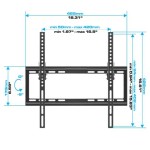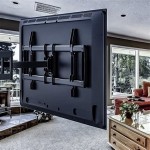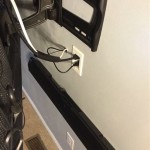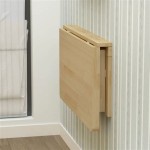Wall Mount Electric Towel Warmer: Enhancing Comfort and Convenience
Wall mount electric towel warmers are becoming increasingly popular additions to modern bathrooms. These devices offer a practical and luxurious solution for drying and warming towels, contributing to a more comfortable and spa-like bathroom experience. They are designed to be easily installed on walls, saving valuable floor space, and provide a consistent source of heat to keep towels fresh and warm.
The functionality of a wall mount electric towel warmer extends beyond simply warming towels. They also aid in drying damp towels effectively, which helps to prevent the growth of mold and mildew. This aspect is particularly beneficial in humid climates or bathrooms with poor ventilation. Furthermore, a warm towel can significantly enhance the comfort of stepping out of a shower or bath, particularly during colder months.
The market offers a wide range of models, each varying in size, style, and heating capacity. This variety allows homeowners to choose a unit that best suits their specific needs and aesthetic preferences. This article will delve into the key aspects of wall mount electric towel warmers, exploring their benefits, types, installation considerations, and maintenance tips.
Benefits of Using a Wall Mount Electric Towel Warmer
Wall mount electric towel warmers provide numerous advantages that contribute to a more comfortable and hygienic bathroom environment. The primary benefits include convenience, hygiene, aesthetic appeal, and energy efficiency, when properly managed.
One of the core benefits is the immediate convenience of having a warm towel available after a shower or bath. This small luxury can significantly improve the overall experience and make colder mornings more bearable. Furthermore, the consistent heat generated by the warmer helps to thoroughly dry towels, preventing the musty odor that can develop when towels remain damp for extended periods.
From a hygiene standpoint, the rapid drying action of a towel warmer inhibits the growth of mold and mildew. These organisms thrive in damp environments and can contribute to unpleasant smells and potential health concerns. By keeping towels dry, the warmer helps to maintain a healthier bathroom environment and prolong the lifespan of the towels themselves.
Aesthetically, wall mount towel warmers can enhance the overall look of a bathroom. Available in a variety of finishes, such as chrome, brushed nickel, and matte black, these units can complement existing fixtures and add a touch of sophistication. The streamlined design of wall-mounted models also helps to save floor space, making them ideal for smaller bathrooms.
Modern towel warmers are often designed with energy efficiency in mind. Many models feature timers or adjustable temperature controls, allowing users to customize the heating settings to their specific needs and avoid unnecessary energy consumption. While the initial cost of a towel warmer might seem like an added expense, the long-term benefits of hygiene, convenience, and potential energy savings can make it a worthwhile investment.
Types of Wall Mount Electric Towel Warmers
Wall mount electric towel warmers come in several different types, each offering distinct features and benefits. The primary types include ladder-style, shelf-style, and freestanding models that can be mounted. Each type also varies in material composition, with common choices being stainless steel, chrome-plated steel, and aluminum.
Ladder-style towel warmers are the most common type. They consist of horizontal bars connected by vertical posts, resembling a ladder. This design allows for multiple towels to be hung simultaneously, providing ample drying and warming space. Ladder-style warmers are generally available in a range of sizes and finishes to suit various bathroom styles.
Shelf-style towel warmers feature a flat, heated surface that can be used to warm and dry towels or other items, such as clothing. Some shelf-style models also include additional bars for hanging towels, offering a combination of drying options. These warmers are particularly useful for bathrooms where space is limited, as they can be mounted above a toilet or vanity.
While typically freestanding, some towel warmers can be securely mounted to the wall. These models often offer a more substantial heating capacity and can accommodate larger towels or multiple items. Freestanding models that can be mounted provide a flexible option for those who may want to move the warmer in the future.
The material used in the construction of a towel warmer can significantly impact its performance and durability. Stainless steel is a popular choice due to its resistance to corrosion and its ability to distribute heat evenly. Chrome-plated steel offers a similar aesthetic appeal at a lower cost, but it may be more susceptible to rust over time. Aluminum is a lightweight and efficient conductor of heat, but it may not be as durable as stainless steel.
Furthermore, the heating mechanism can vary between models. Some towel warmers use a heated liquid, such as oil or water, to circulate through the bars and provide heat, while others use electric heating elements directly embedded within the bars. Liquid-filled models tend to provide a more even and consistent heat distribution, while electric element models offer faster heating times.
Installation and Maintenance Considerations
Proper installation and regular maintenance are crucial for ensuring the longevity and performance of a wall mount electric towel warmer. Installation typically involves mounting the unit to the wall and connecting it to a power source, while maintenance includes cleaning and periodic inspections.
The installation process can vary depending on the model and the existing electrical setup. Some towel warmers are designed to be hardwired directly into the electrical system, while others can be plugged into a standard electrical outlet. Hardwiring typically requires the services of a qualified electrician, especially if a dedicated circuit is needed. Plug-in models are generally easier to install, but they may require a nearby outlet and could present a tripping hazard if the cord is not properly managed.
Before installation, it is essential to carefully consider the placement of the towel warmer. It should be mounted in a location that is easily accessible and convenient for use, such as near the shower or bath. It is also important to ensure that the wall is strong enough to support the weight of the unit, especially when loaded with wet towels. Reinforcing the wall with additional support may be necessary in some cases.
Safety is paramount during installation. All electrical connections should be made by a qualified electrician in accordance with local building codes. The towel warmer should be properly grounded to prevent electrical shocks. The unit should also be installed at a safe distance from water sources to minimize the risk of electrocution.
Maintenance of a wall mount electric towel warmer is relatively straightforward. Regular cleaning with a soft cloth and mild cleaning solution is recommended to remove dust and smudges. Harsh chemicals or abrasive cleaners should be avoided, as they can damage the finish of the unit. Periodic inspections of the electrical connections and heating elements are also advisable to ensure that everything is functioning properly.
If the towel warmer is not functioning correctly, it is important to consult the manufacturer's instructions or seek the assistance of a qualified technician. Attempting to repair the unit without proper knowledge or training can be dangerous and may void the warranty.
By following these installation and maintenance guidelines, homeowners can ensure that their wall mount electric towel warmer provides years of reliable and enjoyable service.
Factors Affecting the Cost of Wall Mount Electric Towel Warmers
The cost of wall mount electric towel warmers varies widely depending on many factors. These factors include the size, material, brand, heating technology, and additional features. Understanding these cost drivers can help consumers make informed decisions when purchasing a towel warmer.
Size is a primary determinant of price. Larger towel warmers with more bars or shelves typically cost more than smaller models. The larger surface area requires more material and a more powerful heating element, contributing to the higher price tag. Consumers should assess their needs and bathroom space to determine the appropriate size before making a purchase.
The material used in the construction of the towel warmer also influences the cost. Stainless steel models are generally more expensive than chrome-plated steel or aluminum models due to the higher cost of the material and its superior durability and corrosion resistance. The finish, such as polished chrome or brushed nickel, can also affect the price.
Brand reputation and quality can significantly impact the cost. Well-established brands with a proven track record of reliability and performance often command higher prices. These brands typically offer better warranties and customer support, providing added value for the investment.
The heating technology employed in the towel warmer can also affect the cost. Liquid-filled models, which use heated oil or water to circulate through the bars, tend to be more expensive than models with direct electric heating elements. Liquid-filled models often provide more even heat distribution and a more consistent temperature, justifying the higher price for some consumers.
Additional features, such as timers, adjustable temperature controls, and integrated lighting, can also increase the cost of a towel warmer. These features enhance the convenience and functionality of the unit, but they also add to the manufacturing cost. Consumers should weigh the value of these features against their budget to determine which ones are necessary.
Beyond the initial purchase price, it is also important to consider the operating costs of a towel warmer. Energy-efficient models with timers and adjustable temperature controls can help to minimize energy consumption and reduce long-term operating costs. Consumers should compare the energy efficiency ratings of different models before making a purchase to ensure that they are making a cost-effective choice.

Dq Hockwold Wall Mounted Brass Electric Towel Radiator

Vogue Colonnade Iv Brass Wall Mounted Electric Towel Radiator

Dq Old Buckenham Wall Mounted Brass Electric Towel Radiator

Dq Heating Elveden Wall Mounted Luxury Traditional Heated Towel Rail

Vogue Regency Brass Wall Mounted Electric Towel Radiator

Sterlingham Stourton 3 Rail Towel Warmer Electric Low Profile Dimmer Switch Polished Nickel Brushed

Dq Lynford Wall Mounted Electric Towel Radiator

Vogue Regency Ii Brass Wall Mounted Electric Towel Radiator

Vogue Sequel V Brass Wall Mounted Electric Towel Radiator

Sterlingham Wollaston 4 Rail Towel Warmer Electric None Polished Chrome








